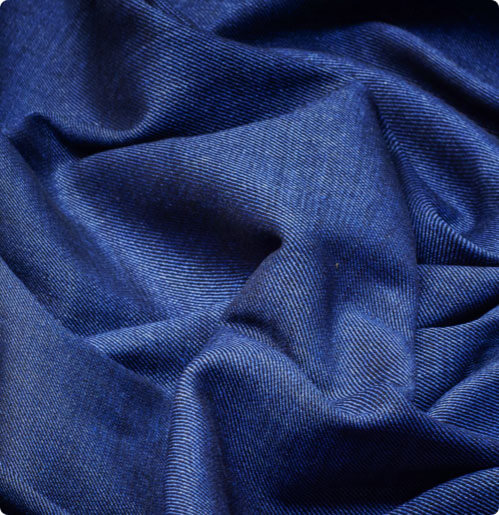Cordura is a high-quality fabric with a history of usage dating back more than seven decades. When initially developed by DuPont, its primary use was in the armed forces.
Despite its original categorization as a rayon-style fabric, its primary use during World War II was as tire material. Contrary to popular belief, cordura was only sometimes considered a special kind of rayon—the research aimed to develop a more robust rayon yarn that could be used to reinforce tire material.
Cordura eventually became a member of the nylon family after its versatility was recognized. The makers of the unique cloth figured out how to color it after 1977.
Fabric dying paved the way for technological progress. The cloth was perfect for making soft-sided suitcases, which accounted for more than 40% of the bag market. That indicates the fabric used to make your backpack or duffel bag is similar to cordura.
Cordura is now often used for not just bags and suitcases but also for outerwear and military equipment. Jeans and shoes, for example, include some of its intriguing applications. Fabrics with similar properties to cordura are used to lengthen the lifespan of the end product. The evolution of this fabric has allowed it to compete in versatility with natural fibers.
Characteristics Of Cordura Fabric
Undeniably, cordura fabric was initially categorized as a rayon fabric, as previously noted. Cordura gained notoriety as a nylon imitation due to carefully tuning its characteristics. The fabric’s potential was expanded. Cordura, being a synthetic, is made to last. Its fibers have a high tensile strength, making them durable over time. It’s exceedingly impervious to water and has a high abrasiveness.
This implies that cordura and materials similar to Cordura are fantastic for many uses. Cordura cloth is used in an infinite variety of goods and settings. It won’t only help you; it’ll help you everywhere you need it.
The Cordura material is also resistant to flames. Fabrics of the cordura style are naturally flame resistant, as required by the National Fire Protection Agency’s 701 recommendations for fabric flame retardancy guide. Because of this, events that call for complying materials are perfect settings for Cordura and similar fabrics.
Like many other fabrics, Cordura may be found in a wide range of weights and designs to suit various uses and purposes. Materials similar to cordura but heavier in weight are ideal for use in industrial settings. The lightweight Cordura-style fabric is excellent for multiple tasks at home and in the workplace.
Certain varieties of the textile were eventually produced exclusively for military use. All fabrics that are similar to Cordura may be used now. These lines of higher quality are suitable for prolonged usage outside, even in harsh climates. Cordura materials can confidently withstand years of use and exposure to the weather.
Important Details About the Basic Structure
Moreover, cordura fabric is well known for its exceptional longevity and wear resistance. This fabric is up to the challenge if that’s what you’re searching for in a durable textile. Let’s go further into the history of cordura and see how it evolved into one of the most robust fabrics available today.
The CORDURA Story
The history of this fabric is extensive. In 1929, this cloth first appeared. During World War II, DuPont developed CORDURA cloth for use by the armed forces.
This material was first used to line military-grade tires, providing further protection from the elements. In harsh military settings, cordura protected tires against punctures, wear and tear, and breakage.
After WWII was over, DuPont manufactured a substitute for CORDURA called Nylon. DuPont eventually figured out how to blend Nylon with CORDURA, making for a more robust and weatherproof fabric. These days, cordura is often woven with Lycra and other forms of Nylon. That’s why it’s so sturdy and long-lasting.
Where Can I Buy CORDURA?
This fabric has several modern applications. CORDURA is a well-liked material for long-lasting goods, such as tents, backpacks, luggage, and rainwear. If you’re in the outdoor apparel, equipment, or accessories market, you’ll probably come across this fabric before too long.
CORDURA Nylon: What Is It
Discovering what cordura is and how it is used will undoubtedly lead you to “CORDURA Nylon.” It’s the same thing as modern CORDURA, which also goes by this name. Since DuPont fused CORDURA and Nylon, both words have known the material but are equivalent.
How is Nylon included in CORDURA?
CORDURA is often combined with other Nylon textiles. Blends of this fabric with cotton or other fibres are not uncommon. The Nylon 6.6 used in most cordura products is a superior-strength nylon fibre.
Deniers are often used to characterize CORDURA nylon mixed textiles. Deniers quantify the weight of the yarn used to make the fabric. 1000D Nylon cordura and 500D Nylon CORDURA refer to the fabric’s weight in grams.
Distinctive Features
Some of the many reasons why CORDURA has become such a widely used cloth are listed below:
Clothing with four-way stretch can adapt to your every move
CORDURA is often blended with Nylon to further its impressive four-way stretch properties. Four-way stretch refers to a fabric’s ability to stretch in breadth and length directions.
A four-way stretch may significantly impact, from regular chores to out-of-the-ordinary experiences. Try ascending a hill or a flight of stairs while wearing garments that don’t allow you to move freely. You’ll have to resist the cloth to move about actively, which will impede and slow you down. CORDURA is a high-quality performance fabric that allows unrestricted mobility in every direction. CORDURA adapts to your every motion, whether sprinting, climbing, stooping, or crawling.
Waterproof and fast to dry
CORDURA fabric is also resistant to water, which is a great feature. Active movement and motion causes the body to sweat. Also, you could get wet if you’re in more rugged terrain. When exposed to water, other materials usually slow you down. The cordura fabric drains sweat away from the body, keeping you dry and comfortable in any climate. This fabric is also high-speed to dry. CORDURA won’t let you remain that way if you become wet for long. Drawing moisture to the fabric’s surface may evaporate more quickly in the open air.
Allowing air to pass freely over your skins
Clothing that allows air to circulate freely is ideal. Breathing freely gives your skin the freedom it needs at a board meeting or on a mountain trek. Although challenging and long-lasting, CORDURA is breathable because of its unique woven construction. Don’t swelter in restrictive clothes. Take a deep breath and relax.
Ability to Multitask in the Workplace and on the Bike Path
CORDURA is the ideal fabric for clothing of any kind. Here at Oliver’s, we employ cordura to make clothes appropriate for the workplace and the bike path. Wear your favorite pair of CORDURA Nylon trousers for a day in the city or at the beach. This cloth may be worn in an infinite variety of styles.
Guidelines for Cleansing
In addition to the benefits above, there are many other reasons to invest in cordura fabric. It’s natural to question whether weatherproof materials will suffer any damage in the laundry. Without the capacity to be washed, what use would a long-lasting cloth have?
You may toss this cloth in the washing machine.
Always go for a temperature between lukewarm and cold. While CORDURA is designed to survive the elements in the wild, it should not be subjected to high temperatures while being cleaned.
The kind of detergent you want to use is the next step. Fabrics and the world both benefit from a sustainable, non-toxic alternative. Avoid harsh cleaning products. Machine drying should be avoided with particular items. To dry your clothes, just lay them flat or hang them up.
The Stretch Weave of the Passage
CORDURA: How do we do it? Benefit from the durability of CORDURA Nylon and the stretch of Lycra in our Stretch Passage Weave. You may wear your cordura trousers to the workplace and on a walk in the afternoon.
Let’s discuss what makes our Passage Pants superior to other long-lasting fabrics.
Now is the moment for a change. The old standard in denim no longer suffices. Even if you avoid denim, you may still need help finding the durability you want in other sports and performance attire types.
The Passage Pant is ideal for situations like these. These trousers are the ultimate need because of their outstanding durability, four-way flexibility, and breathability.
You can discover a pair to match any outfit thanks to the wide variety of colors they come in, such as black, cinder, dark navy, dark olive, carbon, dark indigo, military olive, brass, navy, ash grey, olive, khaki, and blue steel.
FAQs
Why is corduroy so expensive?
Due toto its labor-intensive manufacturing method, corduroy is more costly than textiles from equivalent materials.
What kind of material is corduroy?
Corduroy is a unique fabric that seems both put-together and relaxed simultaneously; it is substantial, long-lasting, ridged, and warm. Cotton or a cotton mix is often used to make the soft fabric. Corduroy, often called corded velveteen, is a fabric for making long trousers.
Is it corduroy cotton or wool?
Corduroy has often been fashioned from cotton. However, cotton-polyester mixes have also been used to make it effective. Wool has also been utilized, although its ridge pattern is more delicate and difficult to see.
Conclusion!
Don’t buy a pair of trousers if you want to go on exciting adventures. These trousers are of military quality, therefore they’re made to function well. Here at Oliver’s, we produce equipment for the contemporary man who refuses to be defeated by rugged terrain or a winding road. CORDURA is always there for you, wherever you go.

















